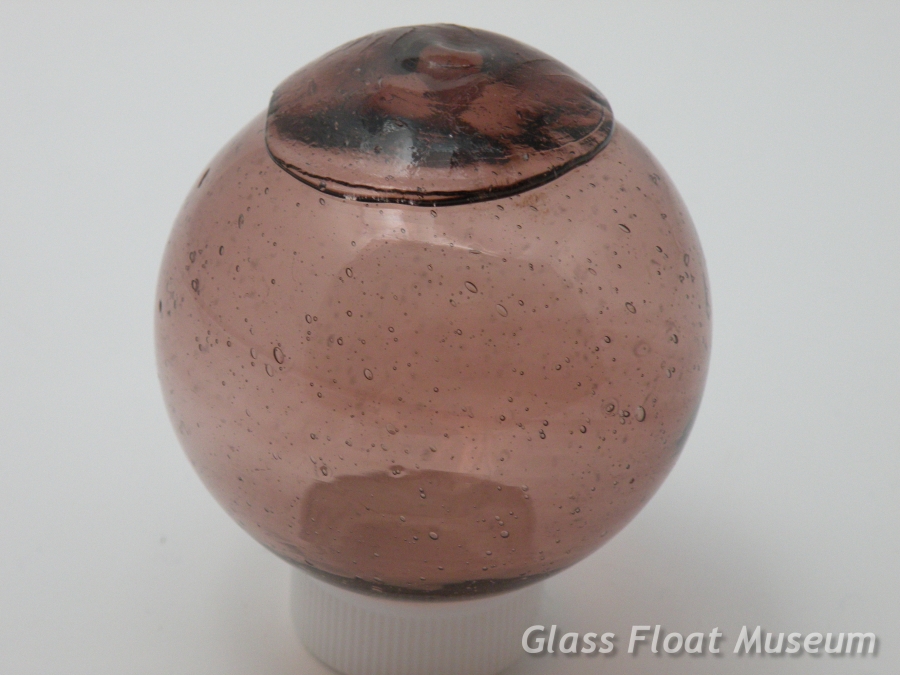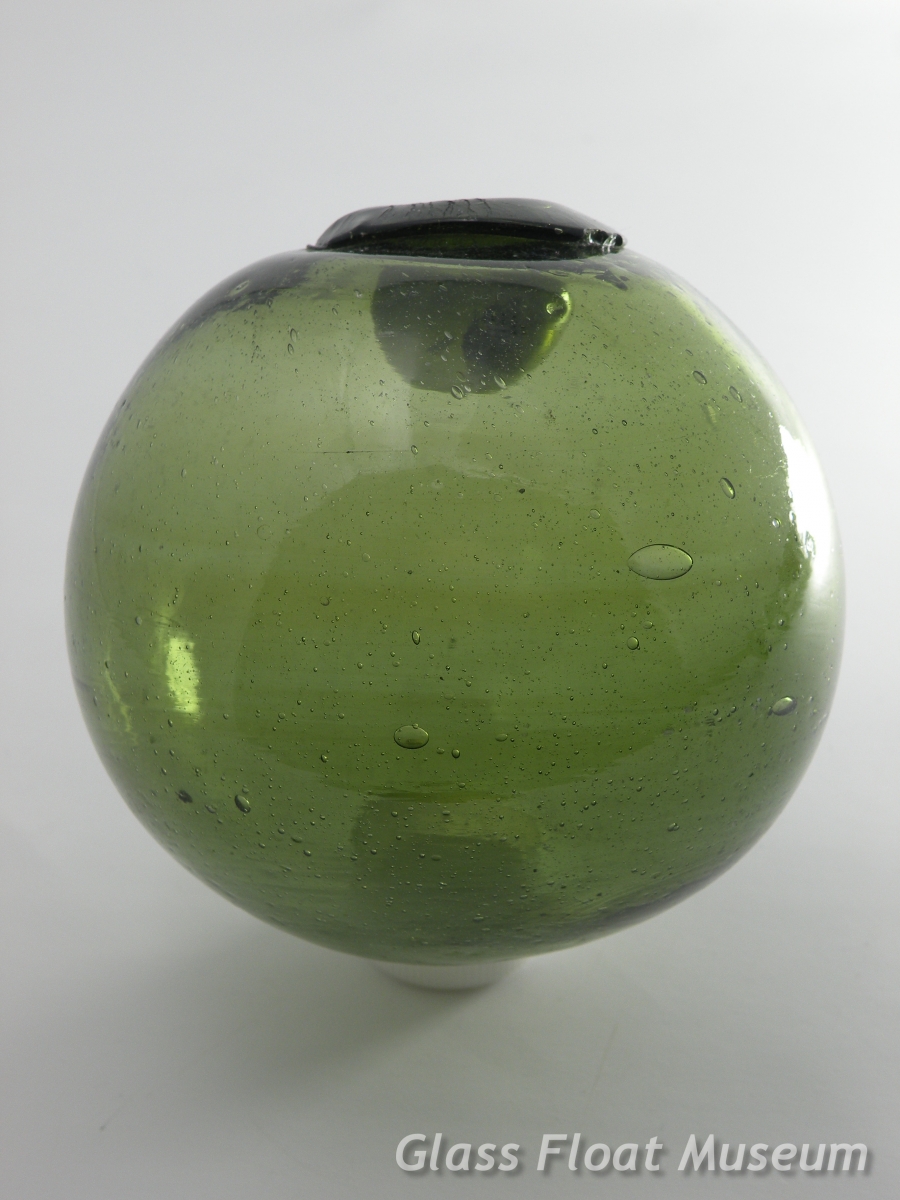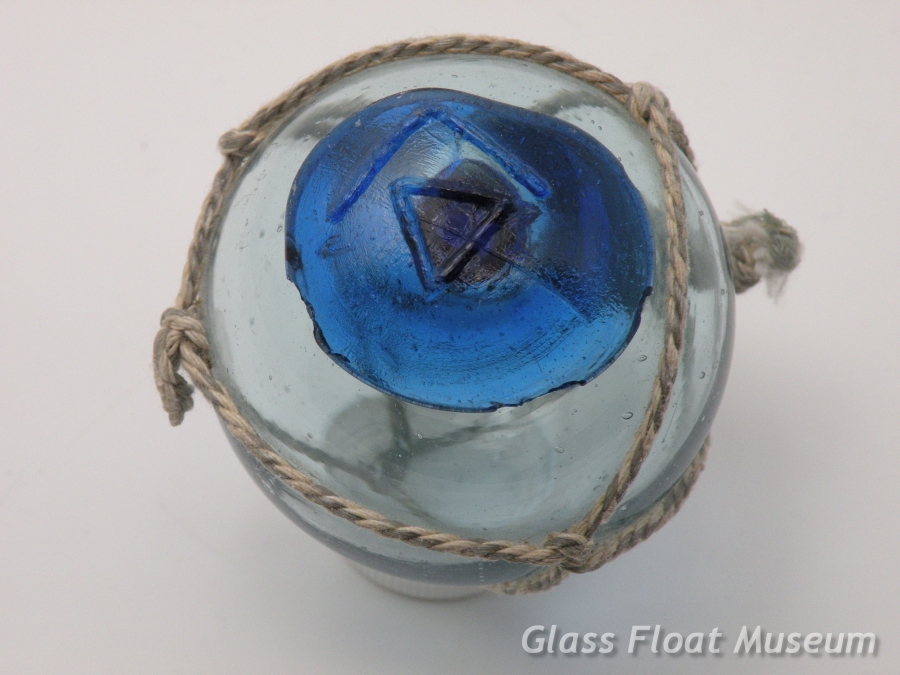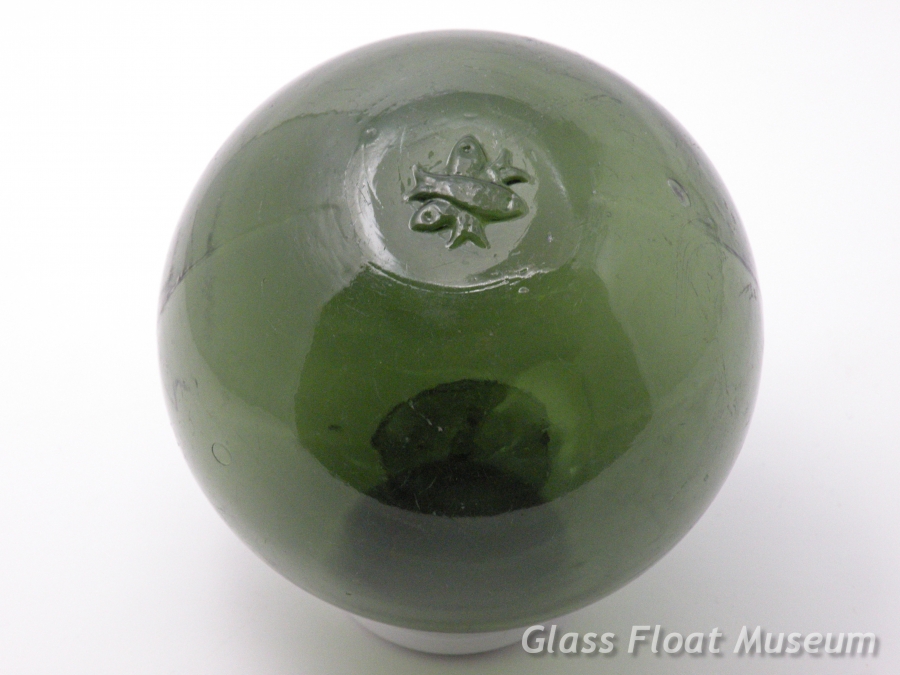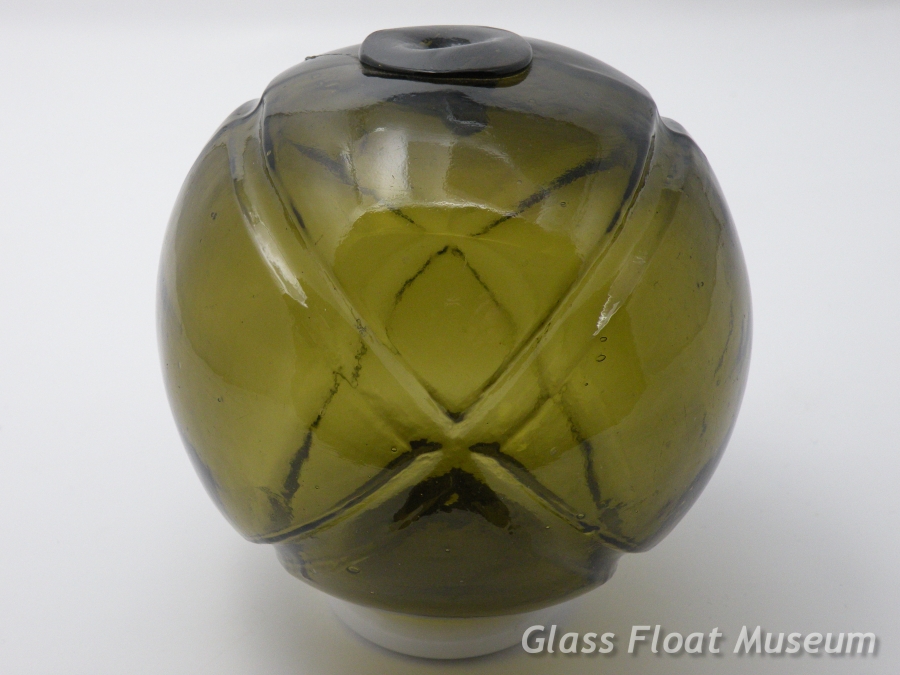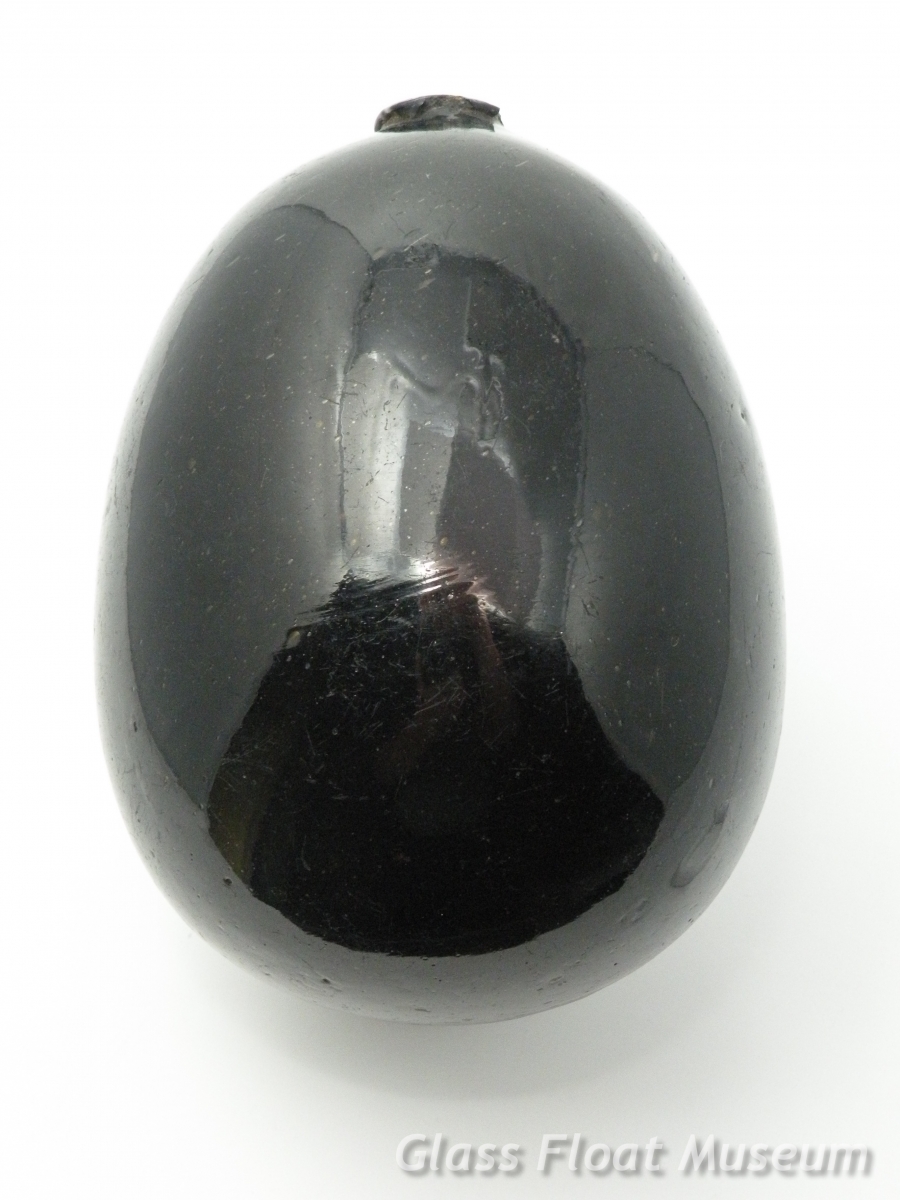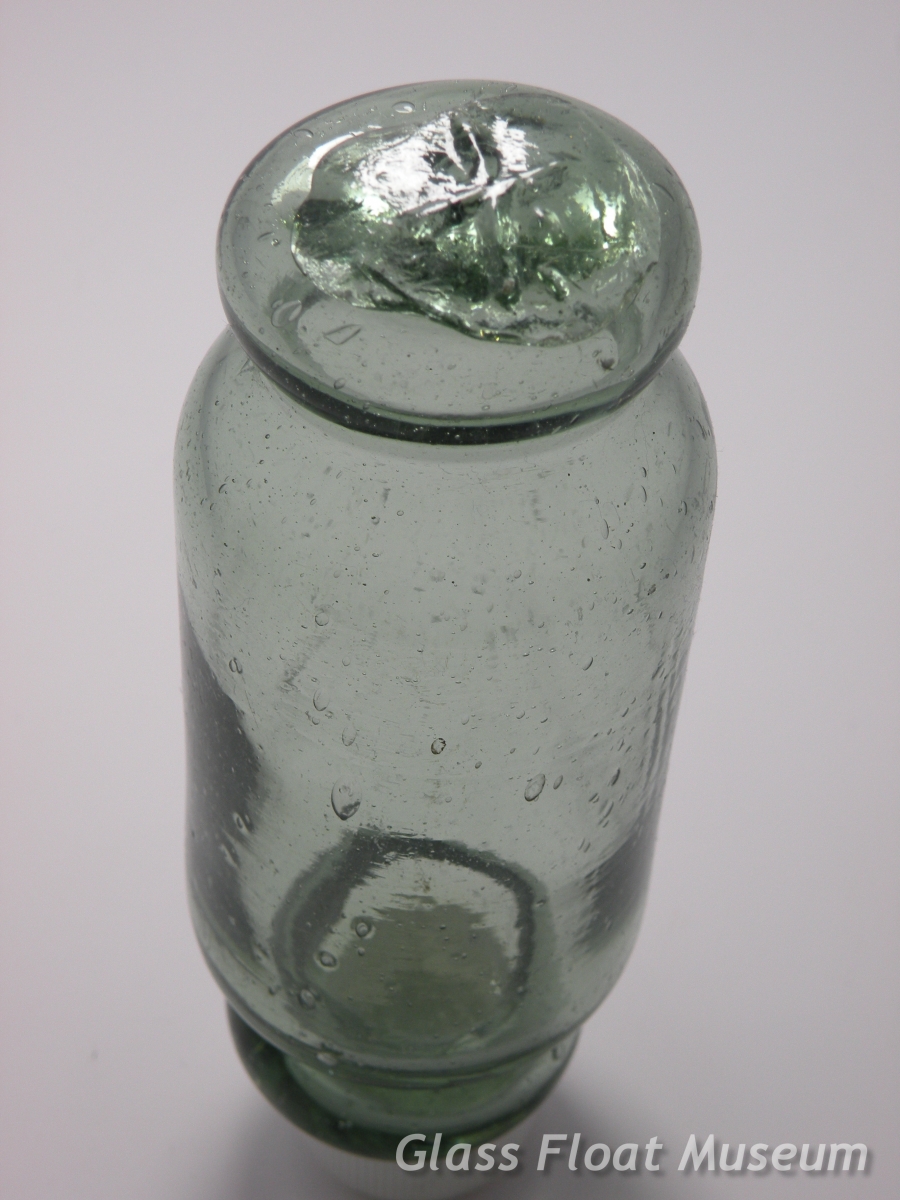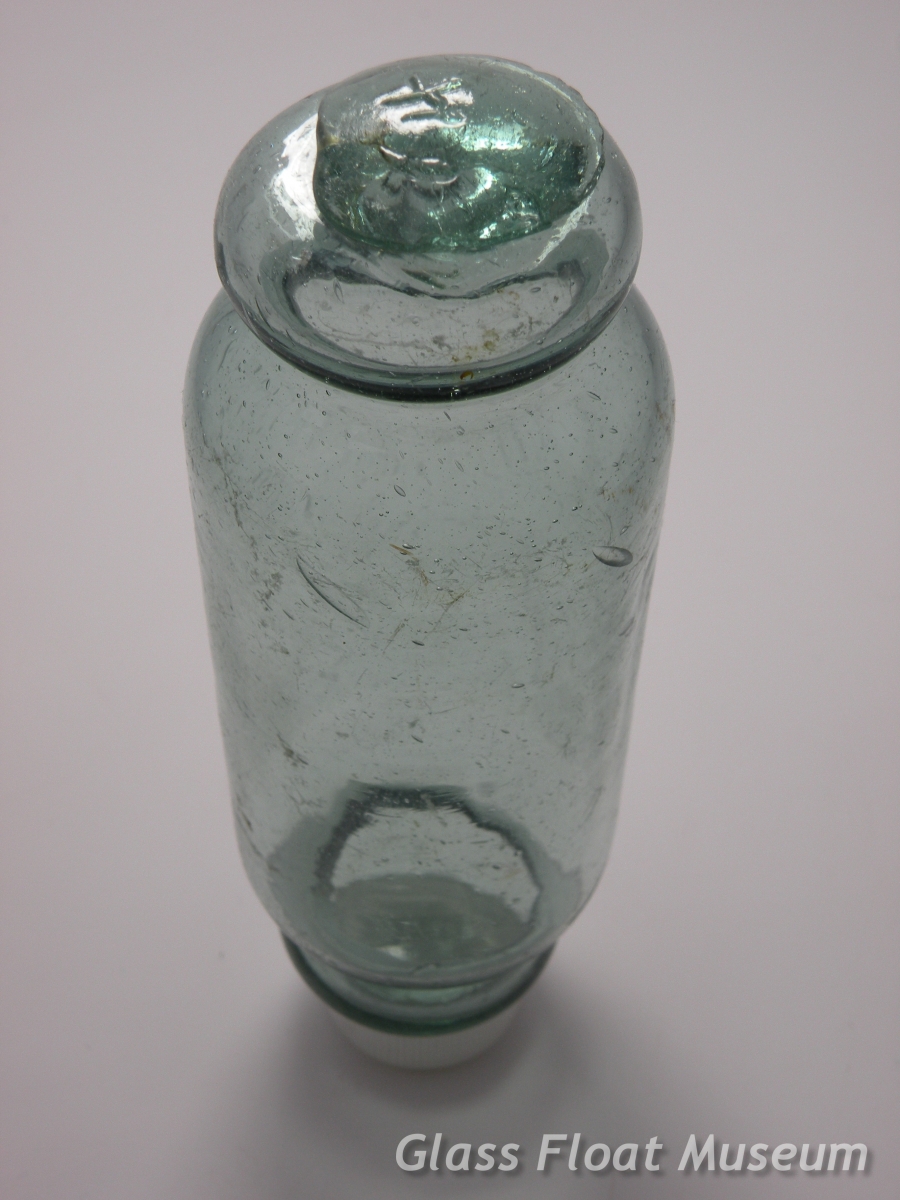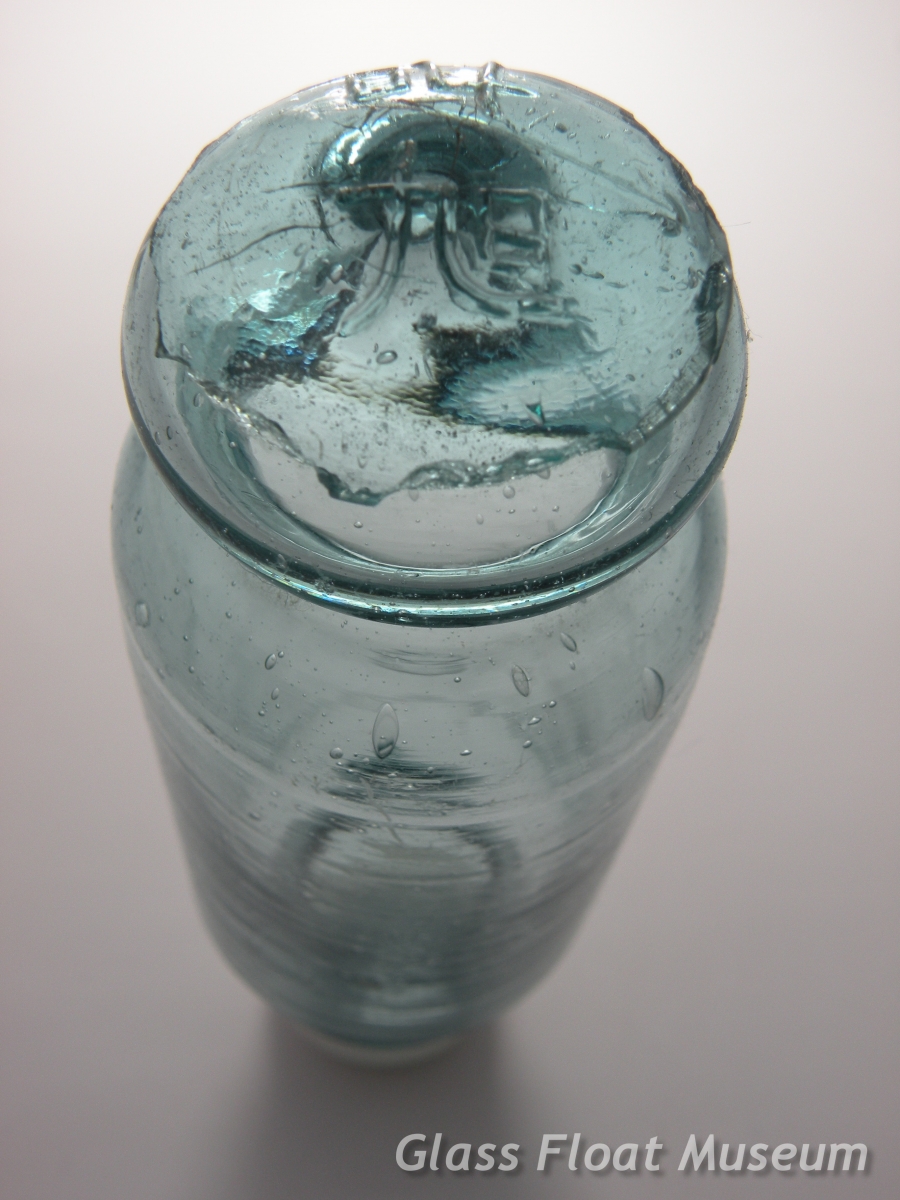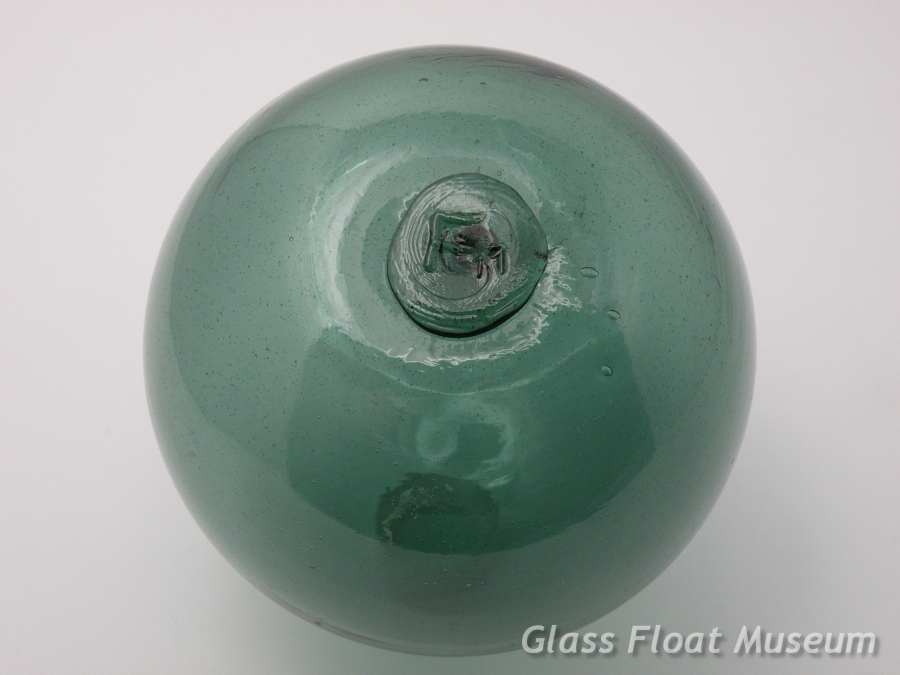
Keith Glein
This float is a very nice example of a Cranberry float.
It's has the classic all over cranberry color. In addition, it also has faint cranberry swirls that emanate from the base and spiral throughout the the entire float.
This is an authentic working float that was probably used to catch octopus on the coast of Japan.
The float has tons tiny bubbles in the glass that only adds to it's collectibility.
Thick free standing Spindle inside a float with lots of blue swirls.
The seal on this float is also quite blue.
It's likely that this float could have been made by Yogi Asahara in the early 1990's.
This Double Ball float has an inner ball that's just over an inch across.
It's an unusual deep green color with fine amber swirls throughout to give a slightly brownish cast.
From Japan.
Blue-green float with a cobalt blue seal button featuring the trademark WP #56. This mark is clear and well-embossed.
The float measures 2 1/2 inches including the net.
This float is an authentic glass fishing float that was found on Hokkaido Island in northern Japan.
Three Crossed Fish mark on a 5 inch Euro float.
For more information, go to Tom Rizzo's blog 'The Sea Hermit' and link to the article dated 1/7/09 that's titled 'Three Crossed Fish Mark'.
https://seahermit.blogspot.com/2009/01/three-crossed-fish-mark.html
Here's an excerpt:
"The last one opened was the Three Crossed Fish.
Beautiful amber brown Double Groove Euro float.
This bi-mold float measures about 5 inches in diameter.
Excellent provenance coming from ex-John Herrera collection.
This specially made Japanese contemporary 14 inch float has many exaggerated features:
1) There's a huge Blue Seal that's 5 3/4 inches across at its widest point.
2) It's a beautiful Cranberry or light Burgundy color.
3) There's an extra large ID seal that is stamped with the classic Kita 北 or 'FF' maker's mark. The ID seal is 3 inches wide.
4) It's a large float that measures 45 inches in circumference or about 14 1/4 inches in diameter.
I've been told that this float was made in the 1960's as a presentation float for tourist of that era.
I know of only two other floats that are the same as this one. I think these floats are quite rare.
It comes with excellent provenance having come from the ex-Jim Watson collection.
This Large Brown Egg or Kveitekulas float comes from northern Norway.
It has an 'M' lightly embossed on the front-center of the float. The 'M' is symetrical and shows all points of the mark.
This large brown egg was most likely used to fish for halibut many years ago.
It measures 6 1/4 inches tall and about 5 inches in diameter.
For more information, go to Tom Rizzo's blog 'The Sea Hermit' and link to the article titled "KVEITEKULAS - Halibut Egg Floats":
https://seahermit.blogspot.com/2011/12/in-mid-2000-per-einar-returned-from.html
Here's an except ...
The Raven wrote: "The coastline of Norway, or length from south to north is about 2000 kilometers. All the big eggs are found between Bronnoysund and Trondheim. Located in the middle of Norway (a coastline of say about 300 kilometers) is the Namsos area with its historical 6 glassverks, about 1/3 of the distance from Trondheim area. The only glasswork north that made darker glass floats was Bjorum - marked B with the dott. I have one dark brown and amber from there, but the production list from 1880's doesn't say anything about Kveitekula. So the production place of these floats is still in the dark. Schimmelmann is far south, in fact not more than 40 minutes with car from where I live. The location is wrong but the color is right. You know in 1830's they shipped with boats. That I know. So Schimmelmann Glasverk could have easily sent them north by boat for the halibut-fishermen. That would be poor speculation, but still a valid point for the blog. It is in fact easier to exclude which glassverk it can't be."
This roller has an undocumented mark consisting of an elongated X with two dots in one of the quadrants. It looks like the symbol 'To' 斗.
There are two glass balls known to have this maker's mark.
There is also a mini jumbo stamped with the elongated X with two dots mark.
This is the only example of this mark known to exist on a standard Hokkaido roller.
This is one of two rollers that I have seen with the mark WP #348 'Sun' 寸.
This mark is typically found only on glass balls.
It's a standard Hokkaido roller.
This Hokkaido roller has a clear and complete stamp of WP #171 'Asahi' 旭.
It measures 5 inches in length.
'F11' stamped on an authentic 5 inch Flesland float.
To my knowledge there is no such thing as an F11.
This is most likely a double strike F1 but it does make one wonder how the iron wiped out the first 'F' yet not the first '1'.
This float has excellent provenance having come from the ex-Richard Carlson collection.
